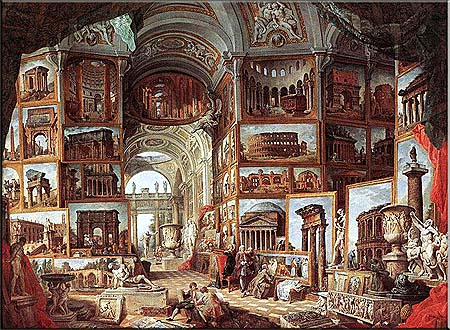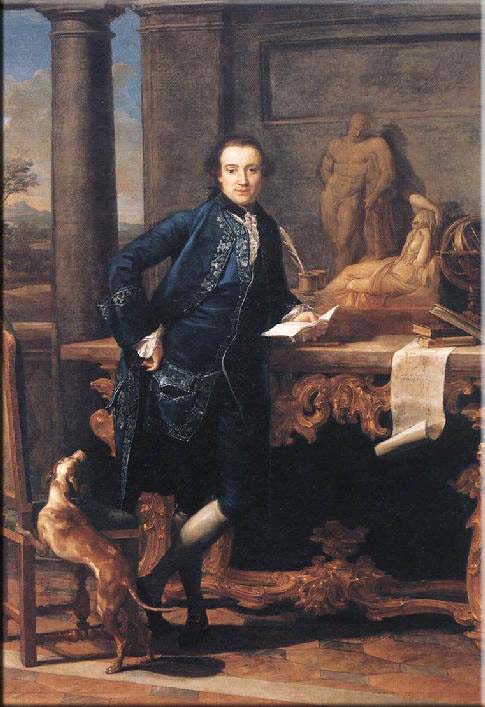ANTIQUE PROVENANCE & THE GRAND TOUR
From the 17th to the 19th Century the Romance and Adventure of the European Grand Tour grew as a phenomenon during which many younger members of English Scottish and Irish Gentry and Scholars, also those from other Northern European countries, sought or were enjoined by their elders to study and experience the grand Antique Monumental Chateaux Castles Houses and Palaces, Schloesser, Landhaueser, Pallazzi, the ancient Artefacts and Archaeological Treasures of the Great European Centers of Civilization.
Apart from the voyage or journey itself this was an adventure into antiquity , the ancient culture and traditional heritage that were to be seen through Northern Europe, The Cathedrals and Temples,the Great Estates and Roman ruins of Flanders , France , Germany, on to Dalmatia but above all in Italy, in Florence,Venice, Rome and Naples, and later in the 19th century to the Balkans, Turkish occupied Greece and the Ancient Greek ruins of Western Turkey itself.
.jpg)

ANCIENT AND CONTEMPORARY ITALIAN FIREPLACE MANTELS FROM 18TH CENTURY ITALY
There was a constant traffic, 6000 travellers from England, Scotland and Ireland alone, interrupted from time to time by wars and religious confrontations, of wealthy focused travellers. The effect in Italy was considerable and beneficial to a all concerned. Firstly the support and patronage to artists, sculptors and artisans which traditonally had come from the Papacy and the Italian nobility for the creative abilites of skill, design and workmanship was now provided from the 17th century by these informed enthusiastic and financially substantial long and short term newcomers.
This undoubtedly resulted in the revival of the fortunes of these talented Italian Scultori, Mosaicista, Painters , Woodworkers and Gilders, and in the process admirably facilitated the spread of breathtaking Italian Classical inspiration and sheer enlightened creative talent to the great benefit of Northern European civilization and thence to Russia and the USA.
One area of the gradual growth of interest and patronage of visitors from the British Isles, from Inigo Jones in the late 17th century right up to Thomas Hope in the 19th century were the “… modern chimneypieces which are for sale in Rome which are of good taste, and the rarest of marbles which are introduced in them, particularly fine slabs of Egyptian Porphyry ” reported by early Grand Tour English visitors.
Sourcing these rare marbles caused the later renowned artist , designer and entrepreneur Piranesi to join forces with Gavin Hamilton, a young Scottish nobleman, in the excavation of quantities of marble, decorative elements and fragments from the marshy Pantanlo area of Hardian's Villa at Tivoli. Hamilton, later Lord Hamilton was a talenrted portrait artist and also served as one of numerous buying agents of antiquities for visiting British Nobility and Landed Gentry. One of Hamiltons clients was Charles Townley, another passionate Antiquarian who assembled the famous Townley collection of statues , vases and elements from Antiquity which were later purchased for the fledgling British Museum. See room 83 , Roman Sculpture.
PIRANESI IN ROMA
Giovanni Battista Piranesi was an Italian Artist, Printer of Art Works and designer whose studio in the Via Sistina in Rome was frequented by many Grand Tourists and resident cognoscenti from England Ireland and Scotland etc to supply the growing demand there by the Gentry for superb Chimneypieces.
In the mid 1760s he had built up a network of specialist sculptors, dealers and agents for the production of fine mostly Neo Classical, which we now call Georgian, chimneypieces. Sometimes incorporating antique marble or bronze fragments and rare marble inlays such as those at Burghley House Lincolnshire in Grand Tourist Lord Exeter's Neo Classical restructured rooms, at Palladian Gorhambury House in Hertfordshire and in Wedderburn Castle in Scotland, designed by Robert Adam who also was known to and worked with him. " ..the best of the fireplaces are by Piranesi."
Our stock no 10151 “Rare and important chimneypiece“ , this antique Palladian period fireplace is typical of design by Piranesi of chimneypieces produced in the late 18th century in this way.
The typical features are of low relief intricate repetitive carving , the higher profile main features and the highly prized Egyptian Porphyry marble which would have been salvaged from ancient Roman elements within or outside of Rome.
The other image on the right shows a similar one documented to have been made in Piranesi’s studio and delivered to 52 St Stephens Square, Dublin the town house just built in 1776 for David La Touche the Hugenot Banker, later Deloitte Touche Tohmatsu.
The desirability and availability of exquisite creations through the discoveries of The Grand Tour resulted in an ongoing traffic in many fine newly made chimneypieces as well as many earlier antique examples, not to mention the antique archaeological and architectural elements, busts and sculptures, paintings and so on.
This to the extent that many of the Great Houses of England Scotland and Ireland had and still have literally thousands of notable and fine 18th and early 19th century chimneypieces which are therefore now in 2010, venerable antique chimneypieces, fireplace mantels, antique sculptures and other elements which had been made by those skilled artisans in their Venetian, Florentine, Roman or Neapolitan studios andd workshops in Italy itself.
Later many also were commissioned to travel to the British Isles to carry out the work for the great Palladian Houses that were being planned and built in the 18th and 19th centuries for the Landed Gentry.
Examples being : The Piranesi designed Chimneypiece for Lord Exeter at Burghley House. Another fine Pophyry mounted Chimneypiece at Paxton House, Berwick on Tweed, and the previously mentioned one for Wedderburn Castle in Scotland, this last one bought by Patick Home, Scottish aristocrat, in Italy from Piranesi.


We can be forgiven for assuming and indeed describing these superb antique chimneypieces and their lesser cousins as being English, Scottish or Irish but they were in fact mostly made in Italy, albeit frequently to the informed clients requirements.
These attributions therefore denote the tastes and locations of the British purhasers who were usually concerned in the design which frequently used features and elements from Roman Antiquity.
Initially the manufacture was just "on spec" by the Italian sculptors and other craftsmen, but later to order through the great designers, decorators and agents such as Piranesi.
It progressed to later when the works were executed also by British and other Northern European Sculptors craftsmen or artists working in Italy such as Christopher Hewettson, 1736-1798, the Irish Sculptor who worked in Rome and Joseph Nollekens, the Anglo Flemish Sculptor.
Here are two examples from Westland's present inventory of Antique Italian Chimneypieces made before the advent of the Grand Tour phenomenon and later brought back to England during it.
This antique Italian Baroque fireplace mantel would have been carved for an Italian City Palazzo property in the late 17th to early 18th century, purchased in Italy some time after , and brought to England. Of the late Baroque Period one can see its styling as moving towards that of the Rococo.
11198. An original period elegantly proprtioned late Baroque Italian chimneypiece in white Statuary marble from the Lombardy region, carved in three sections from the solid. The shelf is with a neat moulding carved into the integral panelled frieze, which is decorated with a typical assymetric large central stylised floral cartouche / motif, flanked by further smaller floral motifs on the upper jamb panels, all carved from the solid. Italian, early 18th century.
This large antique Italian carved stone antique fireplace mantel dates from the 16th century and would have been bought from a Venetian demolition and therefore not expressly made for export.
10419. A RARE & LARGE PERIOD VENETIAN RENAISSANCE Camino in carved limestone. The substantial top section with a stop-fluted gallery over the Vitruvian scrolled carved Lintol supported on scrolled brackets over fluted jambs with lion paw feet on baluster footblocks. Italian circa 1560.
Seria Ludo.